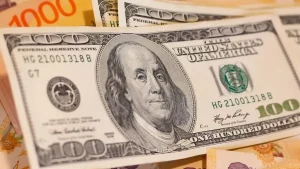A NEW USE FOR SADDAM HUSSEINS PALACE
When Yazan Fadhli introduces himself to people and mentions that he’s from Iraq, his homeland conjures questions about the Islamic State, sectarian violence, chemical weapons and car bombs.
Yet the area he’s from is considered the cradle of civilization, the birthplace of mathematics, astronomy and medicine, and the site of wave upon wave of great ancient empires known for their contributions to science, art and architecture.
“Iraq is historically significant for many reasons, but at the top of the list must be that it encompasses areas where some of the earliest civilizations emerged,” said Seth Cantey, professor of Politics at Washington and Lee University in Lexington, Virginia, adding that “Iraq was once among the most prominent centres of global learning.”
But that’s not how most of the rest of the world sees the Arab country that’s been making headlines for decades.
“Due to the wars that we have been suffering since 1980… the media and [the US] government focus more on the bad side of the country and never show its history,” said Fadhli, who was born in Baghdad and worked with the US army as a translator there before moving to the US in 2008.
A new museum is trying to change all that.
Located in the oil-rich city of Basra in southern Iraq and filled with antiquities from the country’s rich history, Basra Museum, which opened its doors on 27 September 2016, is the first museum to open in the country in decades.
But it’s where the museum is located that is also making headlines: Saddam Hussain’s former Lakeside Palace, a mock-Rococo structure that’s one of nearly 100 opulent residences the former dictator built during his reign. Qahtan al-Obaid, the museum’s director, told the Associated Press he deliberately chose the location to “replace the themes of dictatorship and tyranny with civilisation and humanity.”
The museum is the culmination of an eight-year project to tell the history of southern Iraq and help spark a cultural revival in Basra. Because of a shortage of funds, only one exhibit has opened, a gallery displaying artefacts dating back more than 2,000 years, including silver coins minted in Basra, pottery, coffins and tiles. When complete, the museum will encompass three further halls exhibiting 3,500 to 4,000 objects from Iraq’s Babylonian, Assyrian, Sumerian and Islamic periods.
Although the opening was a triumph, al-Obaid had to overcome a multitude of challenges to reach this point. As recently as April, Shiite militia groups have threatened to seize the former Lakeside Palace, which still bears the scars of car bombs from when British forces briefly used it as a mess hall after the 2003 invasion. And decades of authoritarian rule, foreign invasions, sectarian warfare and, most recently, the rise of the Islamic State, have left much of Iraq pockmarked with bombs. The violence has left antiquities missing, infrastructure shattered and civil institutions nonexistent.
After the British left in 2008, al-Obaid and other local Iraqis undertook years of campaigning, bureaucracy and fundraising to turn the palace into a museum. Certain new features – like the thick steel doors installed at the entrance to each gallery that can be quickly sealed in case of attempted looting or theft – are reminders of the challenges that remain.
But it is those very challenges that make the Basra Museum a point of pride for Iraqis.
“The Basra Museum will help Iraqis to better understand our own history… and show the woorld a different image of Iraq,” Fadhli said. “It is the light at the end of a very dark tunnel. Without history, there is no future [and the museum reminds] me and many others to not give up hope.”
More than its storied antiquities, that hope may be the museum’s greatest treasure.





